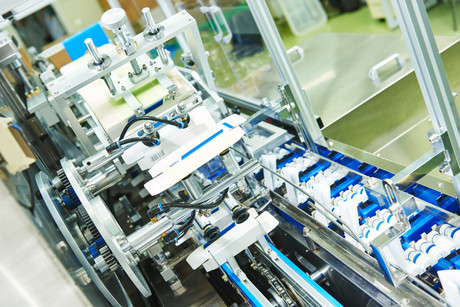Where is Australian manufacturing heading in 2017?

What will be the main trends for Australian manufacturing in 2017 and beyond? Can we expect to see more ‘smart’ factories across Australia? Will more Australian businesses embrace automation and Industry 4.0 data exchange? Can we expect to see improvements in workplace safety?
The answer to all these questions is an emphatic YES.
Money is the smartest thing in the world and it can be a very accurate predictor of future trends. Huge amounts have recently been invested globally in the following technologies:
- Artificial intelligence (AI).
- Robotics: opening new markets including service industries.
- 3D printing: now being used widely in small volume and customised manufacturing — it will challenge and disrupt the traditional mass production model.
- IoT: data is becoming a key competitive advantage.
Australian manufacturers can expect a further breakdown of existing technology barriers. This includes:
- High-level programming languages to unify and simplify automation programming.
- Common communication protocols.
So what will this mean for Australian manufacturers?
It means IT professionals can enter the automation field more easily. This will create a huge talent pool and bring in more creativity and rapid changes. It also means site PLC standards will become unnecessary, opening the field for competition on true value.
And with advancements in technology and automation we can expect to see more manufacturing onshoring. More Australian manufacturers will follow the US lead and bring their manufacturing operations back to home soil.
Automation will bring with it reduced labour costs and higher productivity. Australian manufacturers can expect a reduction of the labour cost ratio.
With the growth in robotics and 3D printing in Australian manufacturing plants, labour costs are becoming less important in manufacturing. It’s now more important to be close to customers and close to the source of raw materials. This presents more opportunities for developed nations like Australia.
China, a global leader in manufacturing, is now moving into a consumption-driven economy.
The transition has opened the door to great opportunities for not only Australian mining but also the food and beverage sector. And the recently signed free trade agreement (FTA) with China will create further opportunities.
But on the other side of the coin, manufacturers can expect increased competition from new players in other industries, especially ICT.
Companies like Tesla, Apple and Uber have disrupted the traditional marketplace with revolutionary ideas and sweeping changes. We can expect to see a new business culture and new skillsets with fast and aggressive changes.
In this environment fast learners will survive and thrive, while the ‘resisters’ will vanish.
Will automation cause widespread job losses? No. It will increase the demand for higher skilled and better paid jobs to replace lower end jobs.
Automation will give Australian manufacturers a competitive edge globally. It will mean access to a larger market and more business opportunities.
In the past, traditional industrial automation has not been an economically viable option for many manufacturers, but this situation is now drastically changing. Powerful modern control platforms can now help to reduce costs significantly. Such platforms can run configuration, programming, and simulation, controlling, monitoring and troubleshooting for all automation equipment including sensors, vision, PLC, VSDs, servos, temperature, safety and robotics — and in the past five years, the technology has improved dramatically.
Machine vision technology is also providing a key to the future. New machines can see things as well — if not better — than the human eye. In the past the human muscle was replicated in manufacturing technology, but now we’re replicating the whole human.
While many plants are still using a standardisation model that was developed 20 years ago, automation technology is improving monthly. A fully automated processing plant with the latest technologies and lower engineering cost can potentially deliver improved productivity and yield while reducing costs.
Australian manufacturers can look forward to 2017 and beyond with great anticipation.
Australia must rethink the foundations of industrial automation
In order to compete globally, we need a willingness to rethink the foundations and build...
IMARC 2025 turns up the innovation spotlight
IMARC 2025 will bring mine owners, operators and contractors together with a line-up of the...
Skills are more critical than ever in today’s AI world
Our increasing reliance on AI to offload cognitive tasks weakens our memorising systems and skills.











